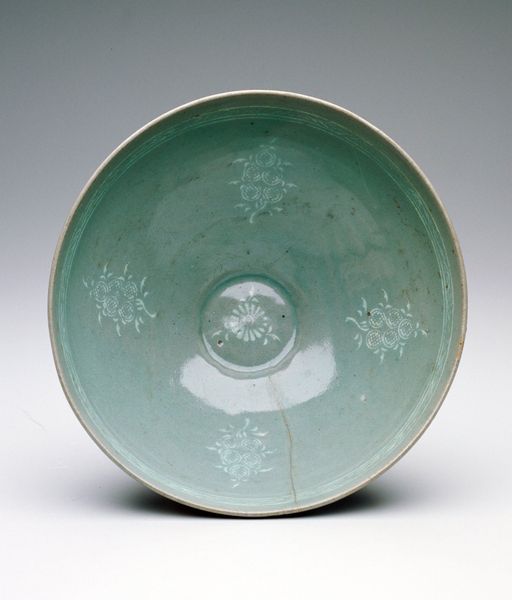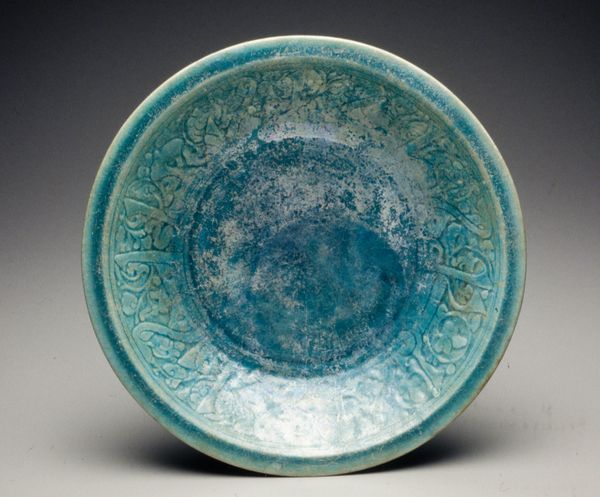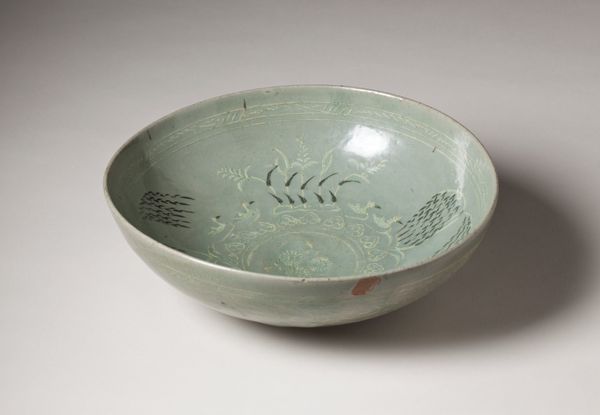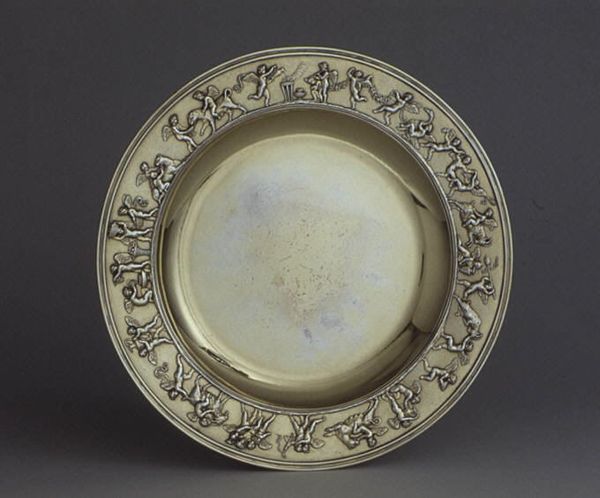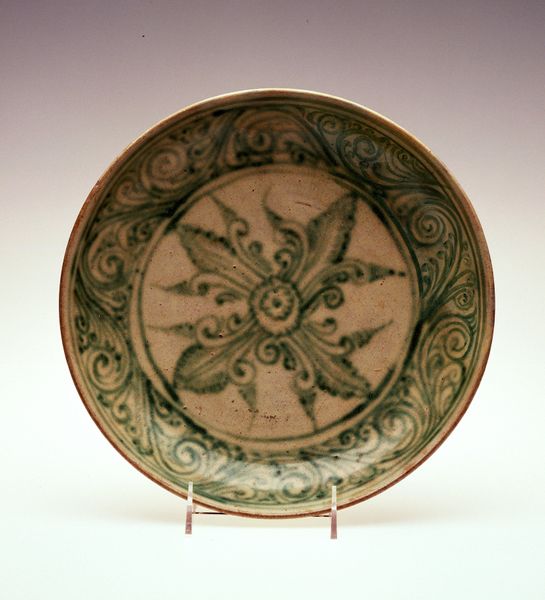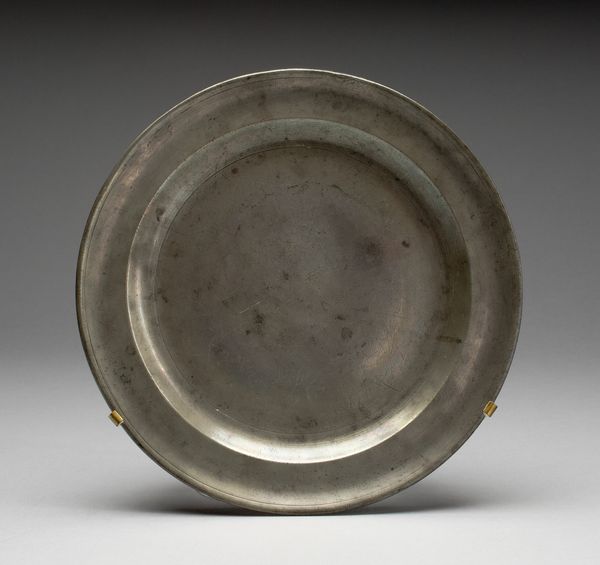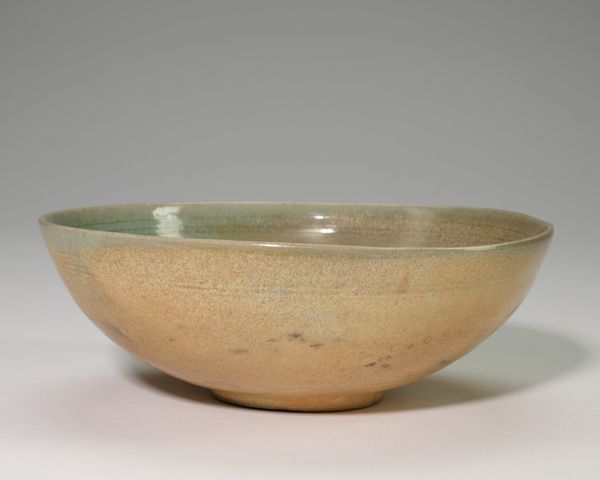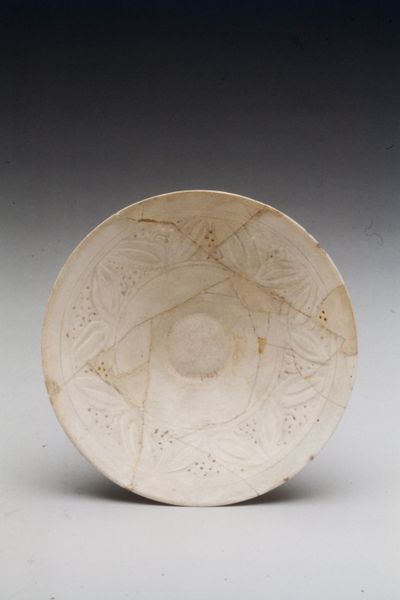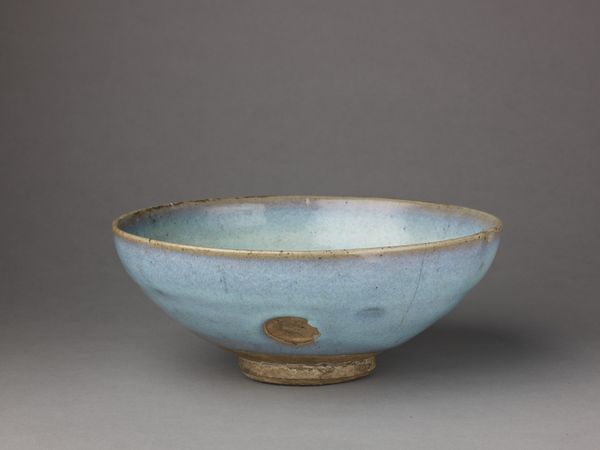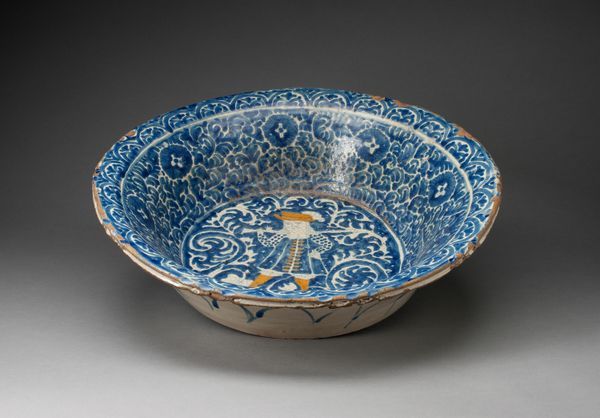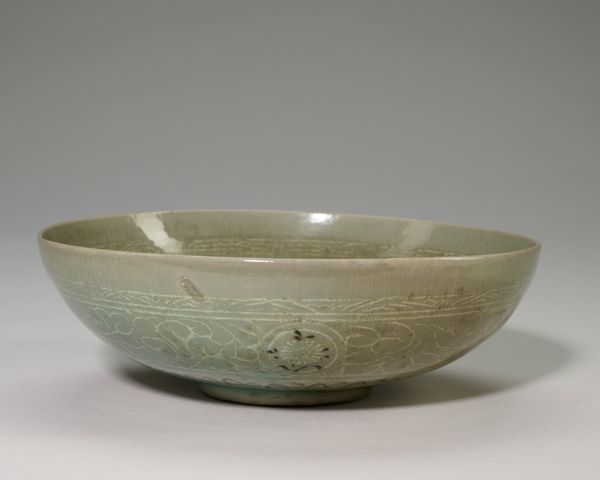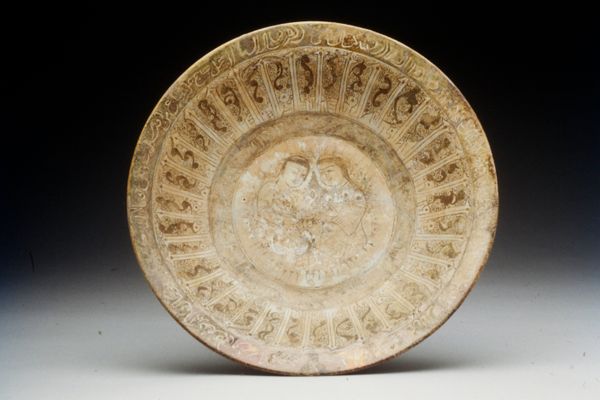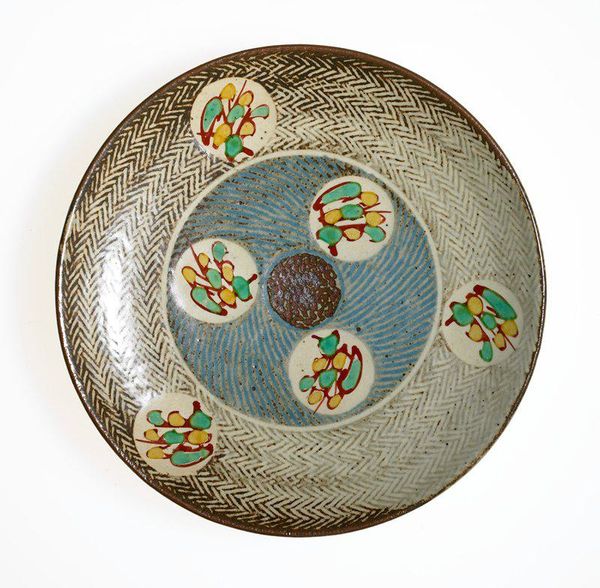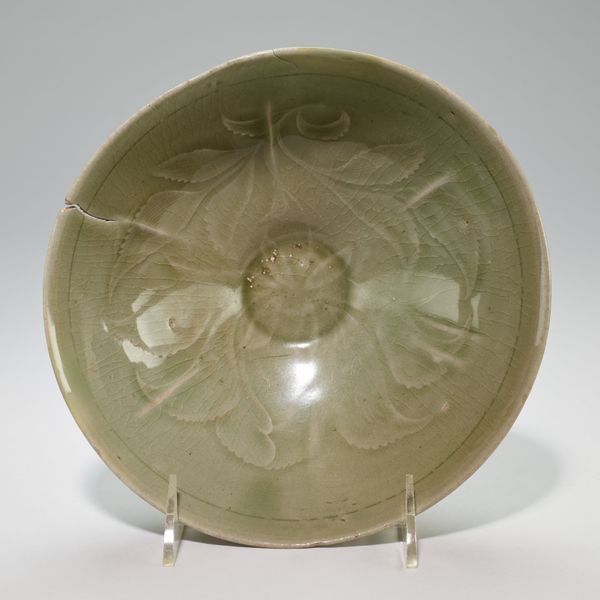
ceramic
#
medieval
#
asian-art
#
ceramic
#
ceramic
#
decorative-art
Dimensions: 3 x 7 3/4 in. (7.62 x 19.69 cm)
Copyright: Public Domain
Curator: What a quiet, unassuming beauty. Editor: It has a sort of pale, milky appearance. But let’s dig into the specifics. We are looking at a ceramic bowl, believed to have been created sometime in the 13th or 14th century. The piece, simply titled "Bowl," is part of the collection at the Minneapolis Institute of Art. Curator: It certainly embodies a distinct sense of the medieval, but it feels like a different world, doesn’t it? Given the style and technique, it appears to be an example of Asian art traditions of the period. It’s interesting to think about what purpose it would have served in its time. Did it belong to nobility, used in religious ceremony, or perhaps for more utilitarian, domestic needs? Editor: The pale green glaze is particularly captivating; it is called celadon, which mimics the appearance of jade. The cloud-like design adds visual appeal to it, the material suggests careful construction. One might imagine the potters, working under specific social and economic constraints. Labor division within the ceramic workshop— who was sourcing and preparing the materials, throwing, decorating and firing it in the kiln? The bowl stands as a testament to the human labor and skill involved in its creation. Curator: Absolutely, it speaks to social and artistic trends. Ceramics like this bowl would have been part of an extensive trade network, a valuable commodity for merchants, elites, and perhaps even for ritual practice. To understand this object, we have to explore the socio-political and cultural circumstances within which it was both created and used, from the role of gender and class, and how it represented power and taste. Editor: Exactly. It’s easy to just glance and appreciate the form, but the material and its creation speak volumes of a complex web of relationships, spanning production, circulation, and use. Each stage a facet of the economic, and societal currents. Curator: It challenges us to examine history, labor and creativity with much deeper insights. Editor: Agreed. It provides so many rich contexts for understanding not only art but human history.
Comments
No comments
Be the first to comment and join the conversation on the ultimate creative platform.
